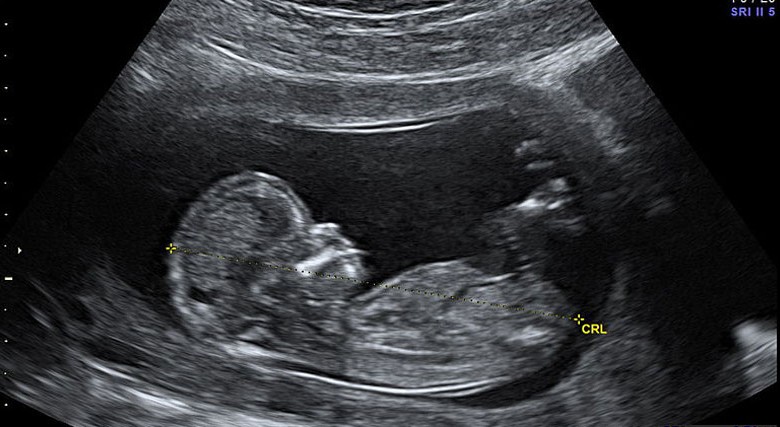Here’s What A Massachusetts Abortion Informed Consent Form Looks Like
By Tom Joyce | May 12, 2021, 16:09 EDT
 (Courtesy of Wikimedia)
(Courtesy of Wikimedia) Before one can have an abortion in Massachusetts, there is a form they must fill out.
It’s called an informed consent form. Typically, according to the National Center for Biotechnology Information, “Informed consent is the process in which a health care provider educates a patient about the risks, benefits, and alternatives of a given procedure or intervention.” In addition to health care procedures in Massachusetts, it applies to abortion.
So what does this form look like and how does it compare to other states? NewBostonPost obtained a copy of the Massachusetts informed consent form for abortion for each of the three trimesters.
The first trimester form informs the woman that they may have the choice between a medical abortion (abortion pill) and a surgical abortion and that this is their “personal decision”. It tells them that these abortion methods are “safe and effective” and that early abortions have a lower health risks than abortions later in pregnancy.
It tells the woman that if she takes abortion pills, she will have “strong cramps and bleeding for several hours”. It says that she must have a foll0w-up visit with a healthcare provider to confirm that the abortion was successful and that if the “the medicines do not work to end your pregnancy, you must agree to have a surgical abortion.” Their stated reason: “the risk of severe birth defects if the pregnancy continues.”
The informed consent form makes no mention of what the woman can do if she changes her mind about having an abortion after taking the pill. The American College of Obstetricians and Gynecologists notes that as many as half of women who take just the mifepristone pill continue their pregnancies. It also does not mention that if a woman vomits a pill after taking it, she can prevent her body from absorbing it.
As for a first-trimester surgical abortion, the form says: “the contents of the womb (uterus) are removed This returns the uterus to its non-pregnant state.”
While the form says that these abortions are safe, it notes that an abortion can cause heavy bleeding requiring blood transfusions as well as, in rare cases, death of the woman.
It tells the woman to return to the abortion clinic or a health care provider within two or three weeks of having the abortion to make sure it didn’t cause her any health problems she may not be aware of. It also tells them the woman she should talk with a health care provider about finding a birth control method that is right for her.
Underneath that portion of the form, there is one sentence in the category “Choices You Have Other than Abortion.” It says: “Other than abortion, you could choose to continue the pregnancy, to raise the child, or to make plans for legal adoption.” It makes no mention of the state’s Safe Haven law, which allows a mother to drop off her unharmed newborn at a hospital, police station, or fire station within seven days of birth without repercussions and without providing any personal information.
The forms for all three trimesters do tell women that if they don’t have an abortion, the state can’t deny them public assistance because they give birth instead of aborting.
On the second and third trimester forms, the unborn child is, as with the first trimester form, referred to as “the contents of the womb.”
The second trimester form explains that dilation and evacuation as well as induction are the two methods used in Massachusetts, but doesn’t explain what those procedures do to the unborn child, saying instead that they remove the “contents of the uterus.”
The third trimester abortion informed consent form appears to be out of date. The one provided to NewBostonPost by the Massachusetts Department of Public Health is from 2013. Since the ROE Act passed in December 2020, the rules are slightly different. For example, the form states in the second paragraph that “When a pregnancy is ended in the last trimester, state law (M.G.L. c.112 §12P) requires that the doctor take all reasonable steps within good medical practice, consistent with the procedure being used, to also preserve the life and the health of the fetus.”
However, as NewBostonPost has reported many times, the ROE Act deleted that passage from Massachusetts General Laws.
The form says that abortions after 24 weeks are allowed in the state “when pregnancy termination in the last trimester is allowed only when medically necessary to save your life or when continuing the pregnancy will cause a substantial risk of harm to your physical or mental health.” The ROE Act expanded the definition, saying that “an abortion is warranted because of a lethal fetal anomaly incompatible with sustained life outside the uterus.”
The abortion methods included are dilation and induction, or cesarean section (C-section or Hysterotomy).
Here is how it describes a cesarean section/hysterotomy abortion:
A C-Section is a type of surgery. A cut is made through the belly and into the uterus. The contents of the uterus are removed through this opening. The opening then is stitched up.
The form does not explain how this procedure differs from giving birth via a C-section.
A Department of Public Health spokesperson explained to NewBostonPost in an email message that the department has not updated the form since the ROE Act passed. They wrote, “No, no changes were made to the third-trimester form. The only recent change related to the ROE Act was changing the age on the minor consent form from 18 to 16.”
NewBostonPost also obtained an informed consent abortion form from the state of Indiana. There are many differences between the two forms.
Notably, the Indiana form states “That human physical life begins when a human ovum is fertilized by a human sperm.”
The Indiana form uses the term “fetus” instead of “contents” to describe the unborn child. It notes that the woman will see “a picture of a fetus,” “the dimensions of a fetus,’ and “relevant information on the potential survival of an unborn fetus” based on the gestational age of her unborn child.
The Indiana form notes that women will receive information about the availability of ultrasound services so they can hear their unborn child’s heartbeat. Additionally, it notes that the father of the child will legally have to support the child if the woman gives birth and that adoptive parents can pay for the costs of things like prenatal care, childbirth, and neonatal care. It also mentions that the woman must be informed about the state’s safe haven law.
New to NewBostonPost? Conservative media is hard to find in Massachusetts. But you’ve found it. Now dip your toe in the water for two bucks — $2 for two months. And join the real revolution.











